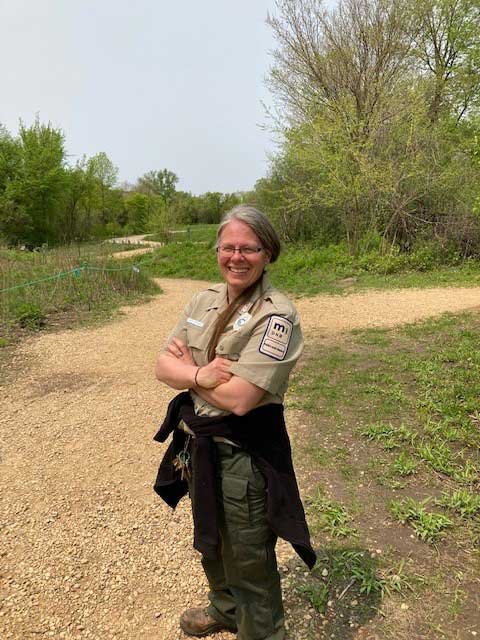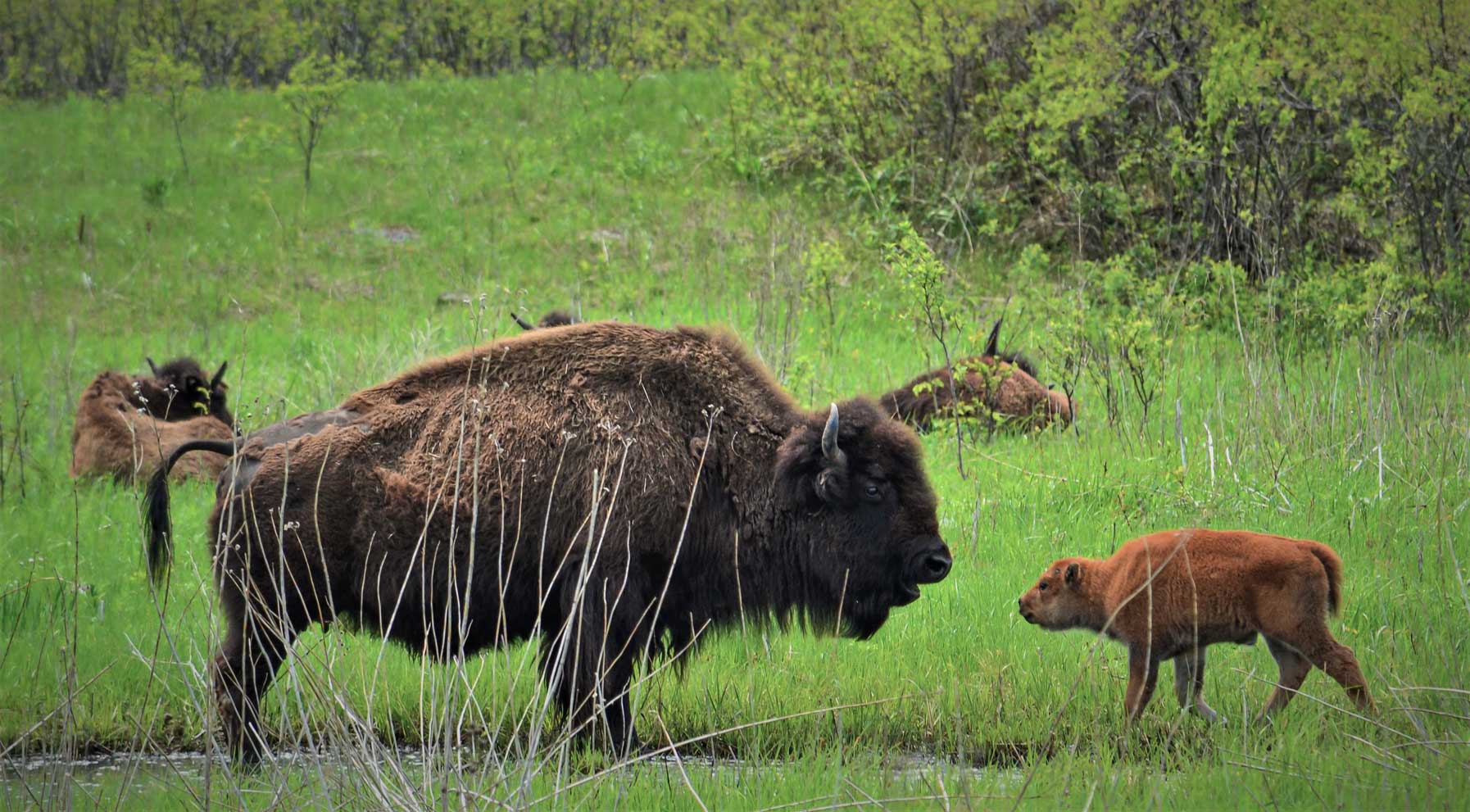Adventures At Minneopa State Park
By Deborah Locke, DNR Information Officer
A newborn bison calf stood near its mother at Minneopa State Park that afternoon. One by one, the herd, located about 500 feet away, trudged to see the red brownish baby. At the site, a second calf born the day before was with its mother.
We were at Minneopa State Park near Mankato on a lovely day in May where a breeze kept the gnats at bay. Sunlight filtered through a light haze that drifted southward from Canadian wildfires. The air smelled green with new spring growth. We, three staff members from the DNR Parks and Trails Division, were there to write about, photograph and film wildlife and the rushing waters from the park’s double waterfall – and anything else of interest.
The bison herd is a big draw at the park where hundreds of cars ease over the bison drive each week. The drive is open to the public every day of the week, except for Wednesday so staff can do maintenance and repairs. Hours vary by season, but during our visit the drive opened at 9 a.m. and closed at 8:30 p.m.
We tuned the car radio station to 1610 AM for information on the park and the Minnesota Bison Conservation Herd while entering the bison range, eyes searching for the elusive herd and its newborns. Bison vary in weight from 800 to 2,200 pounds and run up to 35 miles per hour. They can be dangerous, and visitors are reminded to remain in their vehicles via a sign posted at the entrance and on the radio station.
You never know where the 31-member herd is on a given day. The scenery held interest: massive old oak trees with thick trunks and reaching branches; gigantic field stones that at one time in history, dissuaded farmers from turning the area into farmland; the old wind-powered stone mill where wheat was ground into flour in the 1800s. If you ever watched reruns of the “Little House on the Prairie” television show, the trees, rocks and fields look familiar. Author Laura Ingalls Wilder sometimes used the Mankato area as a story setting.
Then we spotted the bison in the distance, large brown lumps on the ground. As of that day, nine calves had been born. One nuzzled its mother and started to nurse. The herd moved to the area with the newest calves, and the herd’s lone male bison raced to catch up, running as though he was late to catch a plane. The huge bison stopped near the females, looked at us in the car, and looked away. They all did that, looking over and away and then grazing or lying down.
I wanted to watch them all day, the huge creatures once nearly hunted into extinction. But there was more to do and see at Minneopa State Park. Tons of water poured over the park’s two waterfalls that morning, after heavy rainfall a few days earlier. Park Manager Ashley Steevens introduced us to the Works Progress Administration-era buildings made of Minnesota limestone, and to the campgrounds. Families walked the paths and trails with strollers and children; senior citizens climbed into a small bus following a park visit. Two women sat at one of the many picnic tables, each reading thick books near rushing water.
For the adventurous among you readers, know that Flandrau State Park is a mere 35 miles northwest of Minneopa State Park. The sand-bottom swim pond is a big draw at Flandrau.
Should you want a broader look at the state’s beautiful Minnesota River Valley, travel a bit further northwest to Fort Ridgely State Park, which was established in 1911 as a U.S.-Dakota War of 1862 memorial. For me, the day brought to life bison, waterfalls, Laura Ingalls Wilder country, and history – before my eyes and beneath my very feet. It was a very good day.
Minneopa State Park is located off U.S. Hwy. 169 and State Hwy. 68, five miles west of Mankato. The park has two sections: the park office and waterfall are located at 54497 Gadwall Road. Camping, hiking, the historic windmill, and bison are off Highway 68.
A daily vehicle pass is $7 and may be purchased in-person during office hours or online at mndnr.gov/permit. The annual pass is $35 and gives unlimited access to all state parks. Always check the park website for visitor alerts before you leave home.

























